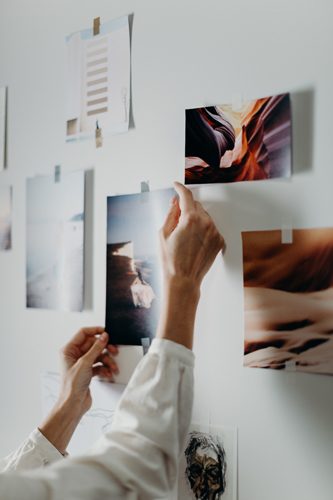Free 2nd Day Shipping on orders above $50.
Free 2nd Day Shipping on orders above $50.
Technology has developed so much that most people no longer need the help of a professional to capture their special moments. With a good digital camera and a reliable home inkjet printer, you can print your own professional-looking photographs to show off to your friends.
But if you are a professional photographer, printing photos is like any art that needs to be done perfectly. Printing photos is just as important as taking them and being able to see your work come to life gives unexplainable satisfaction.
Whether you are a professional photographer or not, let us help you find the right photo paper to ensure that you get the best results for your photo prints! Keep on reading to know more!
P.S. Are you looking for affordable ink cartridges for your printer? Feel free to browse through YoyoInk’s high-quality but budget-friendly compatible and remanufactured ink cartridges for different printer brands!

Let us start with the basic things you need to consider when choosing a photo paper:
The paper size you are going to choose will depend on where you are going to use your pictures. If you will be creating a scrapbook or an album, 4 x 6 or 5 x 7 sizes would be great. But if you want larger displays like posters, calendars, or wall frames, we recommend the following sizes:
Photo papers come in different weights for different applications. Heavier papers produce higher-quality photos. If you want your photos to last for a lifetime, you can go for premium-quality papers. On the other hand, use lighter papers for everyday photos.
Photo paper finishes include matte, glossy, luster, or satin finishes among others. They help in enhancing the look of your photos. Take note, though, that matte papers absorb more ink compared to glossy papers which can affect the printed photo’s quality.
Moreover, matte papers are more preferred for framing photos because they reduce glares. On the other hand, glossy papers provide a consistent finish along with sharp color contrast. We will dive more into matte and glossy photo papers in the next section.
Aside from the paper finish, you may have also heard about alpha cellulose, cotton rag, baryta, and metallic papers. These are materials or coatings that can heavily impact the final print because they help in adding some personality and character to your photos.
Alpha cellulose and cotton rag are the most popular types of materials that are quite similar and hard to differentiate:
On the other hand, the paper coating is crucial when it comes to inkjet printing because they make the paper ink-resistant. The most common options are metallic and baryta coatings:
When it comes to photo paper brands, the most respected ones are Innova, Museo, Inkpress, Ilford, Moab, Red River, and Hahnemuehle. You can ask for sample packs so that you can experiment with them to know which best suits your application.
Not all photo papers have the same level of whiteness. You can use very white papers but be careful because the whitening agents used in them can change color very fast (they can turn yellow after a few weeks). Always choose papers that don’t have artificial brighteners.
The last things you should consider are durability and longevity. Ink-based printers produce prints that fade slower compared to dye-based printers when exposed to sunlight. In fact, ink-based prints can last for at least one hundred years while dye-based prints can only last for more or less 20 years.
For longevity, this depends on the combination of the paper and printer you will use. Make sure to check your printer’s manual for the recommended photo papers to ensure maximum longevity.
Specialty or handmade papers look fun but be careful of dusty ones because they can cause your printer to malfunction.
Now, let us proceed to the common types of photo papers you can choose from:
Next, below are the most common photo paper sizes you can choose from:
The standard photo size is 4″ x 6″ which measures approximately 4″ x 5 ⅞”. This size is the same as the aspect ratio of the viewfinders of the majority of digital cameras. They are great for cards, framed photos, and backups for your favorite images.
In addition to the standard 4″ x 6″ photo paper size, below is a table showing the international standard paper sizes:
5R
6R
8R
S8R
10R
S10R
11R
S11R
12R
S12R
5 x 7
6 x 8
8 x 10
8 x 12
10 x 12
10 x 15
11 x 14
11 x 17
12 x 15
12 x 18
127 x 178
152 x 203
203 x 254
203 x 305
254 x 305
254 x 381
279 x 356
279 x 432
305 x 381
305 x 457
The most common photo print size is, again, 4″ x 6″ (4R) because it is not too big and not too small. Plus, many frame types are available for this size. Another most common size is 5″ x 7″. For wall and desk frames, the common sizes are A4 (8.3″ x 11.7″) and A5 (5.8″ x 8.3″) papers.
The standard size in the photo industry for wallet photos is 2.5″ x 3.5″ (2R) which is slightly bigger compared to credit cards.
Other Photo Paper Sizes
Below are other photo paper sizes in the market:
The most common square photo paper sizes are:
The most common large photo paper sizes are:
The most common large photo paper sizes are:
It is better that you use photo papers that have been recommended by your printer manufacturer. This ensures that you get the best printing quality without getting dull finishes or color fading problems. HP, Canon, and Epson offer a wide variety of papers and inks to help you get the best results for your photos. Below are some recommended photo papers for each brand that you can use:



Aside from choosing the best printer for printing your photos, choosing the right photo paper is also crucial to make sure that you achieve the best quality for your photos.
You will have a lot of options to choose from aside from photo paper sizes and it can be quite overwhelming to pick the most suitable one. But hopefully, this guide was able to help you find the right photo paper for your application. You can also read our blog on how to print high-resolution photos through this link.